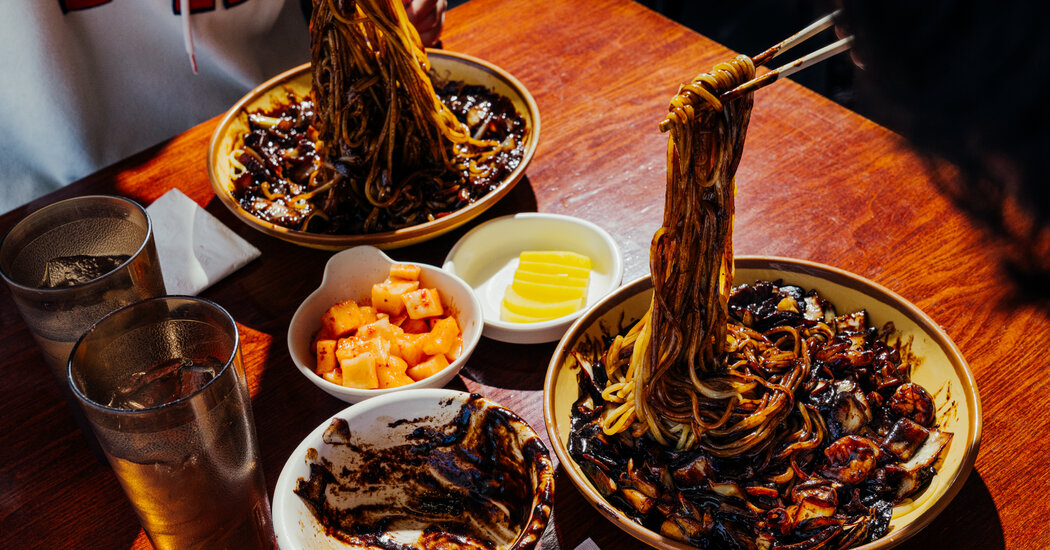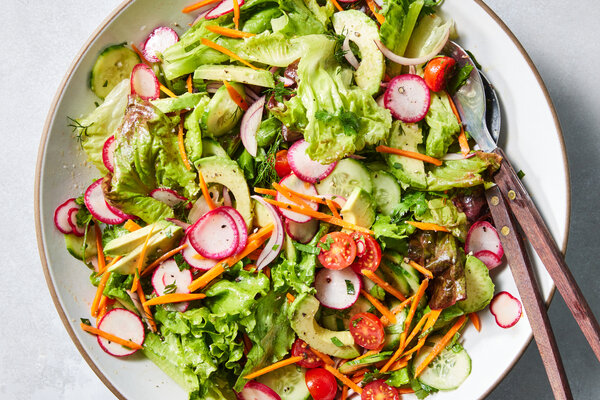If you want to see your Korean friend revert to their childhood self, surprise them with a bowl of homemade jjajangmyeon.
Smothered in a supersavory gravy that’s studded with pork belly, this Korean takeout staple of chewy wheat noodles is universally appealing. Children and babies love it. Adults eat it on their cheat day, birthday, moving day. Korean singles eat it alone on Black Day, April 14, which falls on Monday.
A variant of China’s zha jiang mian, jjajangmyeon (pronounced JJA-jahng-MYUN, the double “j” sound existing somewhere between cha and ja) was created in Incheon, South Korea, by Chinese migrant workers around the turn of the 20th century. Over time, its flavor has become sweeter and richer to match Korean palates. Words can feel inadequate to describe what these black bean noodles taste like. Sweet-salty comes to mind, as does the Korean word for umami, gamchil mat.
To achieve this depth of flavor, the chef Keechang Kim of Dong Bo Sung in Fort Lee, N.J., takes his time browning the onions and rendering the pork fat that make up the sauce’s base, like his father taught him. It extracts a savory sweetness, only amplified by chunjang (pronounced CHOON-jahng), the fermented jet-black soybean paste that’s fried in the fat, then thinned into a gravy for the noodles.
Long in the shadows of its cousins gochujang and doenjang, chunjang — the ingredient that slicks the noodles black — shines in its own way, closer in flavor to Chinese tianmian sauce, or what makes Peking duck taste like Peking duck. Its salty-sweet darkness (the result of black soybeans, salt, wheat flour and caramel) is the stuff of jjajangmyeon dreams.
At the Korean Chinese restaurants that dole out bowls of these black bean noodles around the world, you’ll find even more chunjang served as a condiment, alongside raw onions and pickled yellow radish, often next to a bottle of white vinegar and a shaker of gochugaru.
For Sarah Ahn, an author of “Umma: A Korean Mom’s Kitchen Wisdom and 100 Family Recipes,” a splash of that vinegar (acid) and a shake of that gochugaru (heat) balance jjajangmyeon, an otherwise mellow brown food. It was a tip from her mother, Nam Soon, that surprised many Koreans when she shared it on social media, she said, because, while it’s on tables, vinegar doesn’t normally end up in the noodles.
Jjajangmyeon is a dish often cooked and eaten in a certain way, with tradition at its essence, so it can be a real “aha!” moment when there’s a change in a recipe, however small.
For me, that moment came from my mother, Jean, who uses grated potato in place of the traditional slurry of powdered starch and water to thicken the sauce without gloopiness. The spud’s earthiness also adds to the dish’s vegetal flavors, layers of charred cabbage, onion and potato, uplifting the aromatic richness of pork belly fat.
Another way to make homemade jjajangmyeon especially good? Taking care with the noodles. Delightfully chewy and elastic, fresh jjajang noodles are worth seeking out at your local Asian grocery store, though other wheat-based noodles, such as ramen or udon, are adequate substitutes.
Tora Yi, who owns the Korean Chinese restaurant Shanghai Mong in Midtown Manhattan, rinses the boiled noodles under cold water to remove their claggy starch, then dunks them back in the cooking liquid to warm them up for serving. It’s a lesson, much like a beloved jjajangmyeon recipe, to hold onto for a lifetime.




